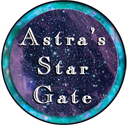Astra's Stargate presents a short list containing the biographies of a few of the women who were true giants in the field of astronomy. Their stories live on and the example they set for women every where and astronomers in general must not be forgotten or ignored. Enjoy!
The Short List
- Caroline Herschel - discovered 8 comets
- Maria Mitchell - first American woman astronomer
- Williamina Fleming - supervisor of women astronomers
- Annie Jump Cannon - spectral classification
- Henrietta Leavitt - Leavitt's law
- Cecilia Payne Gaposchkin - discovered abundance of hydrogen
- Margaret Burbidge - cosmology and galactic studies
Caroline Herschel
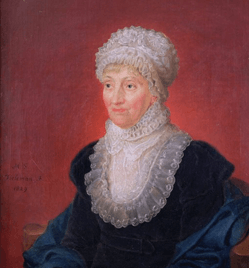
Born in 1750 in Hanover, Germany. Carolyn was slight, and her face was slightly disfigured from a bout with small pox as a young girl of three. Caroline is best known for her discovery of 8 comets and because of her tireless assistance to her brother William Herschel. William Herschel was a musician, telescope maker, and an amateur/professional astronomer who discovered the planet Uranus. William rescued his younger sister from a life of drudgery at home. He brought Carolyn to Bath, England where he was the organist at the Octagon Chapel in 1772.
An avid observer, William armed with a handmade telescope, discovered the planet Uranus in March 1781. While searching for double stars, he noticed an object that appeared as a disk. After submitting his observations, it was identified as a new planet, later named Uranus. The discovery of Uranus changed their lives forever. It brought them the attention of the royal family that eventually earned Caroline an annual salary of £50 granted by George III as William's assistant. She was the first female in England to be honored with a government position and the first woman to be given a salary as an astronomer.
Caroline took notes while William used the telescopes, the largest one being a reflecting telescope with a primary mirror almost 50 inches in diameter (1.26 m) and a 40-foot (12 m) focal length. This 40-foot telescope was the largest scientific instrument that had ever been built. Caroline also helped him to make the telescopes as well as mirrors. She started scanning the sky and discovered eight comets from 1783 to 1787 with a sky sweeping telescope William made her.
Caroline Herschel published a revision of an astronomical catalog known as the Flamsteed catalog. After William's death Caroline made a list of 2,500 nebulae her brother studied. In 1828, she was awarded the Gold Medal of the Royal Astronomical Society for this work that became the basis for the New General Catalog (NGC). The NGC is a star catalog that is used by astronomers to identify deep sky objects even today.
Maria Mitchell
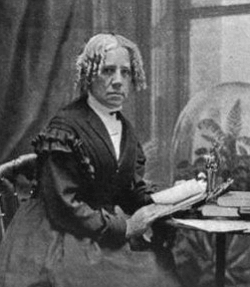
Born in 1818 on Nantucket Island, Maria Mitchell was the first American woman to become a professional astronomer. Maria Mitchell lived on Nantucket Island where her father was consulted by local sailors for weather conditions and to have their ships' chronometers adjusted. By the time Maria was a teenager, she could set their clocks in his absence. Maria studied astronomy with her father who was a teacher and an amateur astronomer. Both he and Maria made observations for the Naval Observatory.
On October 1, 1847 Maria discovered a comet for which she received a medal from the King of Denmark . The King had promised the medal to the first person to discover a comet by telescope. In September of 1865, Maria joined the staff of Vassar College as an astronomy teacher and director of the school's observatory. In 1874, she served as President of the Association for the Advancement of Women as well as being a founding member. In 1910, an observatory was built on Nantucket Island in her memory.
Maria was the first female member of the American Academy of Arts and Sciences in 1848. As an educator for young women interested in astronomy she met many challenges for her students, such as campaigning to allow them to observe at night and other activities that were not allowed for young women. She believed that women were as capable as men in the science fields. In 1876 she made a very well-known speech, "The Need for Women in Science" at the Association for the Advancement of Women's Fourth Congress in Philadelphia, Pennsylvania.
Williamina Paton Stevens Fleming
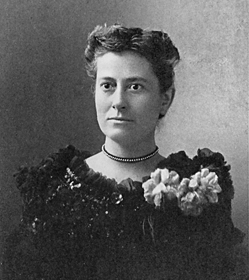
Born on May 15, 1857 in Dundee, Scotland. Williamina was Curator of Astronomical Photographs at the Harvard College Observatory where she supervised dozens of other women. Williamina and other women were hired at the observatory in the late 19th century. I like to call them "lady computers", as they performed star counts and classifications using mathematical methods.
Williamina and her husband James Fleming immigrated to Boston, Massachusetts when she was 21. Unfortunately she and her son, Edward, were abandoned by her husband. As a single parent, she worked as a maid in the home of Professor Edward Charles Pickering to support herself and her young son. Pickering was director of the Harvard College Observatory (HCO). In 1879, Pickering hired Fleming as a part-time administrative worker at the observatory. In 1881, Fleming was formally employed by the HCO and she learned how to analyze stellar spectra. She eventually came to supervise the women employed as human computers working on mathematical classifications and editing the observatory's publications.
Williamina discovered 59 gaseous nebulae, over 310 variable stars, and 10 novae. She is also credited with the discovery of the first white dwarf star. One of her discoveries is the well-known Horsehead Nebula, that she spied on a photographic plate. When the first Draper Catalogue was published in 1890, her name was omitted from the list of contributors who discovered sky objects at Harvard, attributing the entire work to Pickering. Williamina classified 10,000 stellar spectra in the first edition of the catalog. When the Henry Draper Extensions were published they contained the names of Fleming, Cannon and other lady computers at the HCO who finally received proper credit for their discoveries and contributions.
Annie Jump Cannon
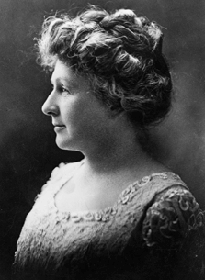
Born in 1863 in Delaware, Annie Cannon studied the spectrum of stars at the Harvard College Observatory. Her studies of the stellar spectra lead to the modern theories of spectral classification. She studied nearly 400,000 stellar spectra using photographic plates at the Harvard College Observatory. She discovered 300 variable stars and five novae. Annie's mother, Mary Jump, inspired her interest in astronomy when she was a child.
In 1880, Annie went to one of the few academic schools for women in the U.S.A.,Wellesley College in Massachusetts. She studied physics and astronomy under Sarah Frances Whiting, herself one of the few women physicists at that time. Annie graduated with a degree in physics in 1884 and was valedictorian of her class at Wellesley College. After college, Annie returned to Delaware, having lost her hearing due to scarlet fever during her college years. Annie's interest in light also led her to take up the new art of photography. In 1892 she traveled through Europe taking photographs with a Blair Camera Co. "Kameret" camera.
When she returned home, she worked with Blair Camera Company to write and illustrate a pamphlet called "In the Footsteps of Columbus". The pamphlet was distributed as a souvenir at the Chicago World's Columbian Exposition of 1893 . Sadly, In 1893 Annie was devastated by the sudden death of her mother. In her grief, Annie wrote to her professor at Wellesley, Sarah Whiting. Sarah hired her as an assistant, and Annie returned to Massachusetts. Annie took graduate courses in physics and astronomy when she enrolled at Radcliffe College. Classes were taught by Harvard professors for female students who were not permitted to enroll at Harvard.
In 1896, Annie was hired by Edward Pickering and set to work on one of the observatory's projects, The "Henry Draper Catalogue". This project was funded by Henry Draper's widow, Anna Draper. The catalogue was intended to map and define every star above 9th magnitude. Annie started out with the spectra of southern stars. As her knowledge grew, she was able to take the various schemes that had been developed at the observatory for spectral classification and merge them into one system. Annie's system is still invaluable for understanding stars. The basic spectral classes are O, B, A, F, G, K, and M. Using these designations, astronomers can understand the basic types of stars. Numbers were added to the letters for finer definitions. This system is known as the Harvard Classification system.
Annie's work on the Henry Draper Catalogue was first published in 1918, in 9 volumes. In 1925, an extension of the original catalogue was published. In her lifetime, Annie Jump Cannon is estimated to have classified spectra of 400,000 stars. She could classify spectra at a rate of more than three stars a minute. As the classifications were done by one observer, the catalogue has a great consistency. In 1911, when Williamina Fleming died, Annie became curator of the Harvard photographic plates. When her term ended, there were over 500,000 photographic in the library. Annie traveled all over the world. In 1922, Annie spent six months at Harvard's Boyden Station taking photographic spectra of the southern skies.
Annie was loved all over the world and belonged to many organizations including the International Astronomical Union, the National Women's Party, the American Philosophical Society American Associations of Variable Star Observers (AAVSO). She was honored with many awards and honorary degrees from colleges and universities around the world. A crater on the moon is named after her - - Cannon and an asteroid - - 1120 Cannonia.
Henrietta Leavitt
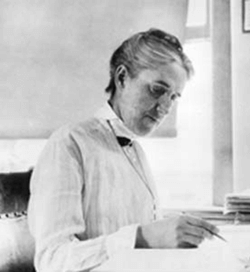
Born in 1868, Henrietta studied at Oberlin College in Ohio. When her family moved to Cambridge, Massachusetts, Henrietta enrolled at the "Harvard Annex" that is now Radcliffe College because at that time Harvard University did not admit women. Henrietta Leavitt graduated in 1892 with the equivalent of a Harvard Bachelor of Arts degree. She enjoyed astronomy so much that she volunteered as a research assistant at Harvard’s observatory.
After earning her Bachelor's degree, Henerietta traveled to Europe for a few years and then returned to her family's home in Wisconsin. She wrote to Edward Pickering who invited her back to work at the observatory as an employee. Henrietta was assigned to study variable stars with a "blink comparator".
Henrietta began to suspect that there might be a relationship between the brightness of a variable star and the length of its period. The period is the amount of time it took a star at its brightest (maxima) to its dimmest state (minima) and back again to its brightest state. Miss Leavitt looked at variable stars called "Cepheids" that were located in the "Small Magellanic Cloud" (SMC), one of the closest galaxies to the Milky Way. Henrietta realized that all the stars in the SMC were a similar distance from the Earth. These stars brightness varied over a certain period and Henrietta discovered a relationship. The variance of their brightness was dependent on their distance. This relationship allows astronomers to determine Cosmic Distances for objects in the universe. Her work helped astronomers discover the size of the Milky Way galaxy.
Henrietta was a quiet person and dedicated to her work. She was prone to ill-health and became increasingly deaf. Before her death on December 12, 1921 in Cambridge, Massachusetts, she became the head of stellar photometry at the Harvard College Observatory although she died shortly after her appointment. Today, the variable star relationship that Henrietta discovered (the period- luminosity relationship) is known as "Leavitt's Law".
Cecilia Payne Gaposchkin
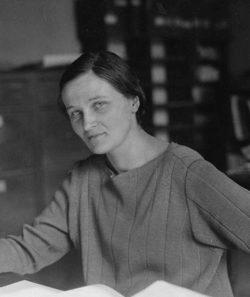
Born in 1900 in Wendell, England, Cecilia Payne discovered that there is more hydrogen in the universe than any other element and wrote a dissertation on the subject. A studious young girl, Cecilia won a scholarship that paid all her expenses at Newnham College. Her interest in astronomy was fanned when she attended a lecture by Arthur Eddington who spoke on his 1919 expedition to the island Principe off coast of Africa to observe stars near a solar eclipse when astronomers were testing Albert Einstein's general theory of relativity. Cecilia changed her major from botany to physics. Although Cecilia completed her studies, she was not awarded a degree, as at that time, Cambridge did not give degrees to women.
Deciding that teaching was the only avenue available to her in England, Cecelia was able to go to the Harvard Observatory under a fellowship grant. Supported by Harlow Shapley , the current director, Cecelia wrote her thesis on variations in stellar absorption lines. Her research found that helium and hydrogen were more abundant in the universe than previously thought. She concluded that hydrogen was the overwhelming element present in stars, and that it was the most abundant element in the Universe. Her thesis entitled, "Stellar Atmospheres" , was not immediately accepted by astronomers of the day until astronomer Otto Struve validated her findings, calling her work "the most brilliant PhD thesis ever written in astronomy.
Cecilia was awarded a Ph.d from Radcliffe College at Harvard in 1925. Cecilia joined the staff of the Harvard observatory staff and spent the rest of her career there. She also studied the distant stars. She was the editor of the Harvard College newsletter for many years and wrote many other papers with other astronomers. She became the first woman to become a full professor at Harvard College. She taught astronomy for 10 years at Harvard, becoming the Astronomy Department Chair in 1950. Cecelia married astronomer Sergei Gaposchkin who she met when visited the observatory in Leningrad, Russia. (Soviet Union) She produced several books and also edited the publications of the Harvard College Observatory for 20 years.
E. Margaret Burbidge
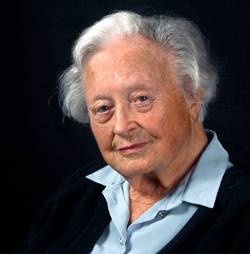
Born in 1922 in England. Margaret worked with other astronomers to develop theories of what happens inside stars. She studied distant galaxies outside of our own Milky Way. She was employed by Yerkes Observatory at the University of Chicago in 1951. Margaret was the first director of the Center for Astrophysics and Space Sciences at the University of California in San Diego, a position she held from 1979 to 1988. In 1982 Margaret became the first woman to receive the Astronomy Society of the Pacific’s highest honor, the Catherine Wolfe Bruce Gold Medal for outstanding contributions to the field of astronomy.
Margaret was a professor at the University of California. She was the first women, as well as the first civilian to direct the Observatory at Greenwich (1973-1976). Margaret also held the positions of President for the American Astronomical Society (1976–78), and President of the American Association for the Advancement of Science (1983).
Read comments from women astronomers celebrating Margaret's birthday posted by the Committee on the Status of Women in Astronomy(CSWA)written in 2019. Find: Happy 100th Birthday Margaret Burbidge! Unfortunately the bright star Margaret passed away in April 2020.
This is not a complete list of woman astronomers, all a short list of some of the top astronomers, researchers, and teachers of their time. Don't fret if one of your favorites is not on the list. Send a message to the Gatekeeper, using the Contact Page to suggest or request an inclusion on the site.
The Short List
- Caroline Herschel - discovered 8 comets
- Maria Mitchell - first American woman astronomer
- Williamina Fleming - supervisor of women astronomers
- Annie Jump Cannon - spectral classification
- Henrietta Leavitt - Leavitt's law
- Cecilia Payne Gaposchkin - discovered abundance of hydrogen
- Margaret Burbidge - cosmology and galactic studies
Use the links above to review or return to starwimin biographies.
Please feel free to point others to this URL. Images on this page are in the public domain in the U.S.A. The text on this page is copyrighted, ©2020, by the author, Dawn Jenkins, and is NOT released into the public domain. It should not be copied to another site without permission or otherwise published without contacting and crediting the author. Please read the copyright statement linked below. For more information and other permissions use Astra's Contact Page
